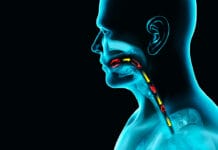Celiac disease, or CD, is known to cause problems all over the body, but did you know that the disease can make itself known in the permanent teeth of affected children?
According to The Difference in Symmetry of the Enamel Defects in Celiac Disease Versus Non-Celiac Pediatric Population, CD’s effect on the enamel of the permanent teeth in children is both visible and consistent. This finding allows dental professionals the ability to suggest celiac-sensitivity testing by a primary care physician as part of an effective strategy to modify individual dental hygiene plans and increase overall dental health.
Study Details
This study, set in Portugal, sets aside the revelations that some medical professionals believe that CD doesn’t really exist in itself but is just a symptom of a larger problem. The children chosen for this study were all tested for CD, and either had been diagnosed with CD or not, as decided by a medical doctor.
Eighty CD patients and eighty non-CD patients, all with permanent teeth, were examined and compared to children in the other group who were relatively the same age. The control group patients were included only if they had never suffered from any CD symptoms and if they have never taken the drug tetracycline, which can cause unusual tooth pigmentation.
Each child was checked first by the same dental professionals who made decisions based on what they found. Random children were rechecked by another professional to ensure accuracy in the data and protect both the dental professionals and the researchers from accusations of negligence or bias in their study.
Celiac Disease and Enamel Problems
Celiac disease is a sensitivity to gluten, a protein that is in many of the foods we love to eat. It usually makes itself known with gastrointestinal problems that usually start in the intestines. Many people don’t know or are never told of the full damage that CD can cause gluten-sensitive people, and most people wouldn’t think of it as damaging to their teeth.
Some people with CD have symptoms that are considered ‘silent,’ but that occur in the mouth. They just don’t realize it. Delayed tooth eruption, an increase in caries, geographic tongue, burning tongue, xerostomia, recurrent aphthous stomatitis, angular cheilitis, and enamel defects are all dental symptoms of the disease. Medical professionals may discount many of these symptoms as pure dental problems to be addressed by dental professionals and not precursors to the condition they are trying to diagnose.
Impairment of crown mineralization may exist in our patients, but when the impairment is symmetrical, then the cause is may be a gluten allergy. Any discolorations, hypoplasia, and opacities that are symmetrical point straight to CD. Symmetric pitting and grooving are also obvious symptoms that should be addressed.
The Facts
Enamel defects and damage were found in over 55% of children with CD, compared to only 27.5% in children without CD. Researchers using Aine’s classification system on measuring enamel and identifying the type of enamel deficiencies discovered that Grade I deficiencies and damage (defects in color or discolored and hazy markings) were found in both groups, though much higher in frequency in the CD group. Grade II changes (added structural defects, pitted surfaces, extreme color changes) were significant and were only found among the group of children with CD.
The problem initially begins in the permanent molars and then spreads to the permanent incisors. Incisors and first molars were found to be the most affected as far as the stage of odontogenesis, and it’s relationship to active stages of CD. The visual damage is almost always symmetrical and easy to see. The discolorations in pigment are usually very visually evident in your patient’s smile as the damage does occur on anterior teeth.
Addressing your findings to a patient as soon as possible is essential. This way a referral, proper testing, and diagnosis by a medical doctor can be made, and if necessary, dietary alterations (gluten-free diet) can be made to prevent or reduce enamel alterations.











